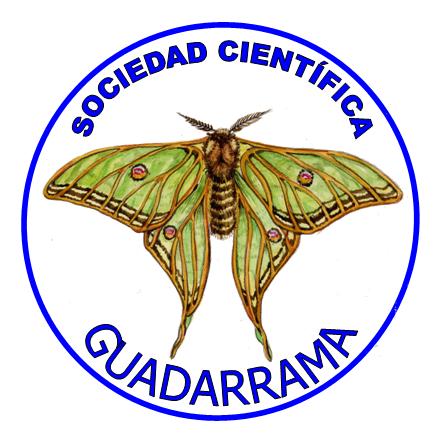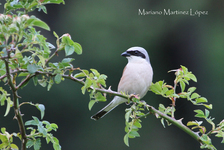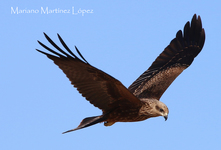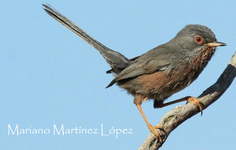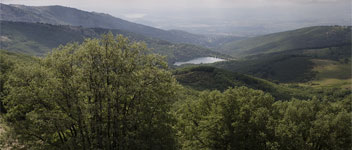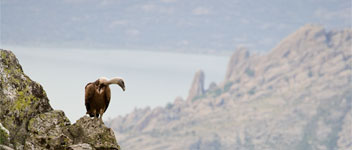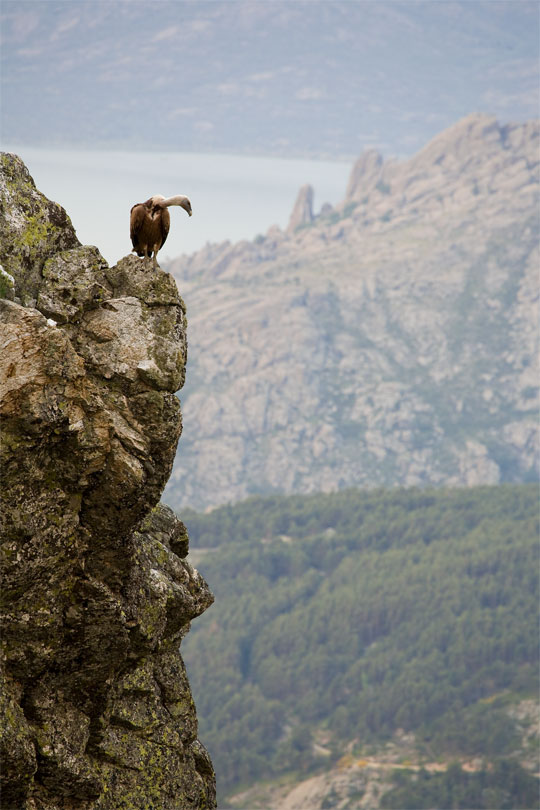
Birdwatching
Miraflores de la Sierra has many very well preserved ecosystems which contribute to the presence of a wide range of birdspecies. The diversity of ecosystems ranges from the high summits of La Najarra mountain, standing at more than 2.000 metres, to the low-lying fields and ash coppices, not forgetting the rugged mountain slopes in between covered in thick forests of pine and oak.
In these areas, we can find different species of birds such as the black vulture, golden eagle, rock thrush, blue throat, red-backed shrike or citril finch.
Part of the municipality is included in areas of special protection, such as the ZEPA, Bird Special Protection Area, or the recently created Sierra de Guadarrama National Park, and the fact there are some 150 different species of birds found within the Miraflores de la Sierra area is proof of the rich and diverse abundance of birdlife.
Undoubtedly, of these 150 different species, one of the most important types is the bird of prey of which there are a wide variety. The forests and mountain summits are home,among others,to the golden eagle, peregrine falcon, booted eagle, European honey-buzzard, and the short-toed eagle.
It is not unusual to see the imposing 3-metre wingspan of the blackvulture circling overhead. This is the largest of the birds of prey found in the areawhich nests not far awayin the Lozoya valley.
In the lowland areas, we can see the black kite and common buzzardin the meadows and riverside woodlands. And sharing the same habitat,we also find the red kite, a bird of prey which is becoming scarcer in Spain. In this area of the mountains, however, there are a good number, and the population multiplies in winter with the arrival of birds fleeing the harsh winters in the north of Europe.
There are many different types of habitats in the lowlands,such as the holm oak and ash woodlands, where there are a wide number of species of birds.
Other areas of great interest for bird watchers are the meadows and shrub lands where there arewarblers, stonechats, and buntings. Here we also find members of the shrike species, one of the most important being the red-backed shrike,not easily seen as it is near the southern limit of its breeding range.
As we start to gain altitude, we find one of the most extensive, best preserved melojo oak (Quercus pyrenaica) forests in the Madrid Community situated between an altitude of 1.200 and 1.600m. Nowadays, however, a large part of the oak forest has been taken over by the Scots pinedue toreforestation carried out during the last century.
In the forest habitat, the most common species are the great tit, blue tit, long tailed tit, short-toed tree creeper, Eurasian nuthatch,Bonelli’s warbler y the striking golden oriol.In addition,there are four different species of woodpeckers: the green woodpecker, woodpecker, wryneckand lesser spotted woodpecker. On the slopes above the oak forest, the Scots pine forest is home to species such as thecrested tit, coal tit, crossbill, citril finch, mistle thrush and goldcrest.
Above an altitude of 1,800 metres, the trees start to give way to mountain pasture, rocky areas and shrub land composed of mountain broom and creeping juniper. This habitat is home to some of the most striking species of birds, such as the rock thrush, northern wheater,tawny pipitand hedge sparrow. If we are in luck, and patient enough, we might even see a bluethroat, a bird which is becoming ever more rare.
Without doubt, the best time of year to enjoy these routes is spring when the vegetation is blooming and the area receives a multitude of different birds which come to breed in the mountains.
It is also interesting to look out for the wide variety of migrating birds heading south in autumn, or on their way north in spring, birds such as cranes and geese.
Although the number of birds and species in this region goes down in winter, we are still able to catch sight of a few species such as thebullfinchand mountain finch.
Many birds move down from the mountain shrub lands and pine forests to lower altitudes in winter to spend the cold months in more benign habitats,for example the hedge sparrow, citril finch, lark, goldcrest and mistle thrush.We recommend walking these routes during different seasons of the year to see how the bird populations vary,and to appreciate the changes in the vegetation, especially in the wonderful oak forest found on the slopes above Miraflores.
Oscar Vilches Mendoza
Sociedad Científica Guadarrama
